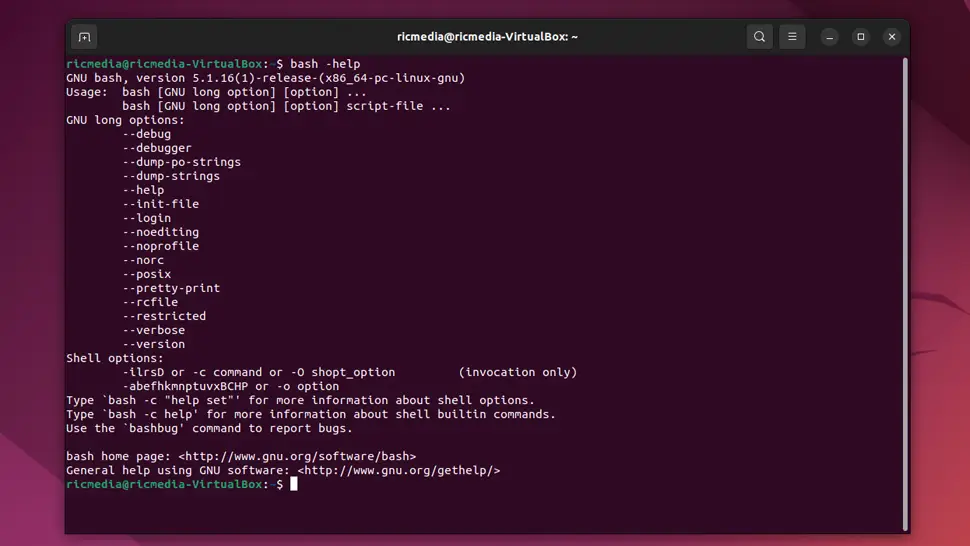Bash is a popular Unix shell that provides a command line interface to interact with the operating system. In addition to executing commands, Bash can be used to write scripts that automate tasks, manipulate files and directories, and perform other system administration tasks. In this tutorial, we will cover the basic programming concepts of Bash, including loops, conditionals, and functions.
Contents
- Recommended Books
- Prerequisites
- Creating a Bash script
- Basic programming concepts
- Conclusion
- See Also
- Further Reading
Recommended Books
I can highly recommend these books to help you learn Bash and also as handy Bash reference.
- Learning the bash Shell: Unix Shell Programming 3rd Edition
- Bash Pocket Reference: Help for Power Users and Sys Admins 2nd Edition
- The Linux Bible 10th Edition
- The Linux Command Line, 2nd Edition: A Complete Introduction
- Linux Administration: The Linux Operating System and Command Line Guide for Linux Administrators
Prerequisites
To follow this tutorial, you will need a Unix-based operating system with Bash installed. This includes Linux, macOS, and many other Unix-like systems. You will also need a text editor to create and edit Bash scripts.
Creating a Bash script
To create a Bash script, you can use any text editor, such as nano, vim, or Sublime Text. The script file should have an .sh extension, which indicates that it is a Bash script. For example, you can create a new file called myscript.sh by running the following command:
nano myscript.shOnce you have created the file, you can start writing your Bash script.
Basic programming concepts
Variables
In Bash, variables are used to store values that can be used later in the script. A variable is defined by assigning a value to a name. For example, you can define a variable called myvar and assign it the value Hello, World! like this:
myvar="Hello, World!"You can then use the variable in the script by enclosing it in curly braces, like this:
echo ${myvar}This will print Hello, World! to the terminal.
Loops
Loops are used to repeat a set of commands multiple times. Bash provides two types of loops: for and while.
For loop
A for loop is used to iterate over a set of values. For example, the following script will print the numbers 1 through 5 to the terminal:
for i in 1 2 3 4 5
do
echo $i
done
While loop
A while loop is used to repeat a set of commands as long as a condition is true. For example, the following script will print the numbers 1 through 5 to the terminal:
i=1
while [ $i -le 5 ]
do
echo $i
i=$((i+1))
done
This script uses the -le operator to test whether i is less than or equal to 5. The i=$((i+1)) line increments the value of i by 1 each time the loop runs.
Conditionals
Conditionals are used to test whether a condition is true or false, and execute different commands based on the result. Bash provides several conditional statements, including if, elif, and else.
If statement
An if statement is used to execute a set of commands if a condition is true. For example, the following script will print Hello to the terminal if the variable name is equal to Alice:
if [ $name = "Alice" ]
then
echo "Hello"
fi
If-else statement
An if-else statement is used to execute one set of commands if a condition is true, and another set of commands if it is false. For example, the following script will print Hello to the terminal if the variable name is equal to Alice, and Goodbye if it is not:
if [ $name = "Alice" ]
then
echo "Hello"
else
echo "Goodbye"
fi
If-elif-else statement
An if-elif-else statement is used to test multiple conditions and execute different sets of commands based on the result. For example, the following script will print Hello to the terminal if the variable name is equal to Alice, Goodbye if it is equal to Bob, and Nice to meet you if it is anything else:
if [ $name = "Alice" ]
then
echo "Hello"
elif [ $name = "Bob" ]
then
echo "Goodbye"
else
echo "Nice to meet you"
fi
Functions
Functions are used to group a set of commands together and execute them as a single unit. In Bash, functions are defined using the function keyword, followed by the function name and a set of parentheses. For example, the following script defines a function called greet that takes one argument and prints a greeting to the terminal:
function greet {
echo “Hello, $1”
}
greet “Alice”
This will print Hello, Alice to the terminal.
Conclusion
In this tutorial, we covered the basic programming concepts of Bash, including variables, loops, conditionals, and functions. Bash is a powerful tool for automating tasks and performing system administration tasks on Unix-based operating systems. With these basic concepts, you can start writing your own Bash scripts to automate your workflow and make your life easier.
See Also
- Top 10 Keyboard Shortcuts for Linux
- Top 15 Linux Bash Commands
- Create a Bootable USB Drive with Linux
- How to install Debian Linux – Complete Guide


Comments
There are currently no comments on this article.
Comment